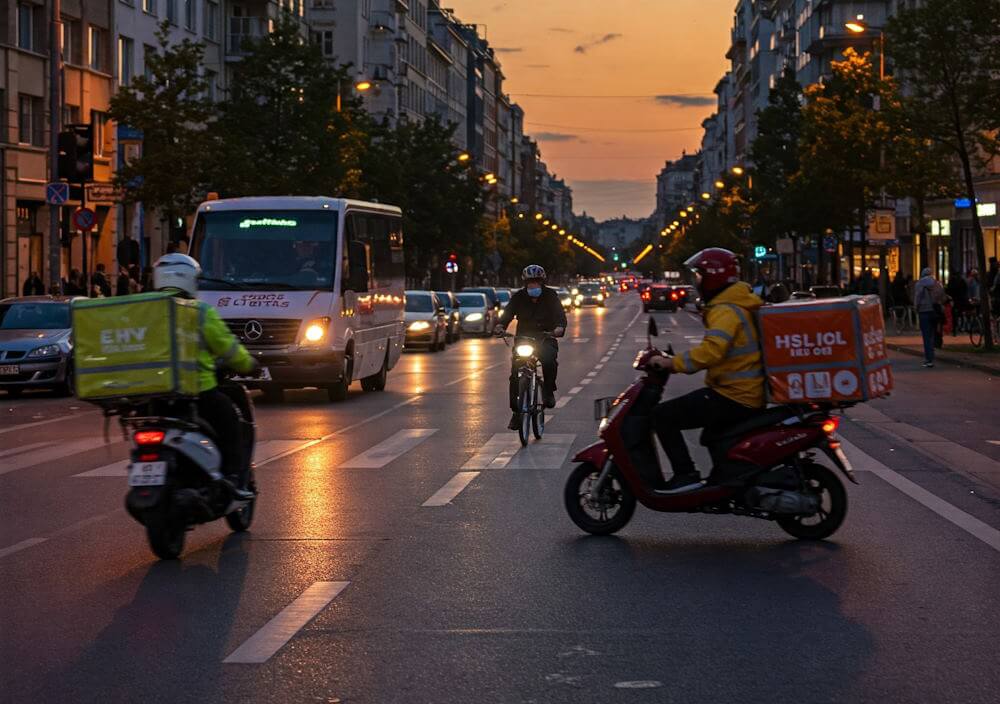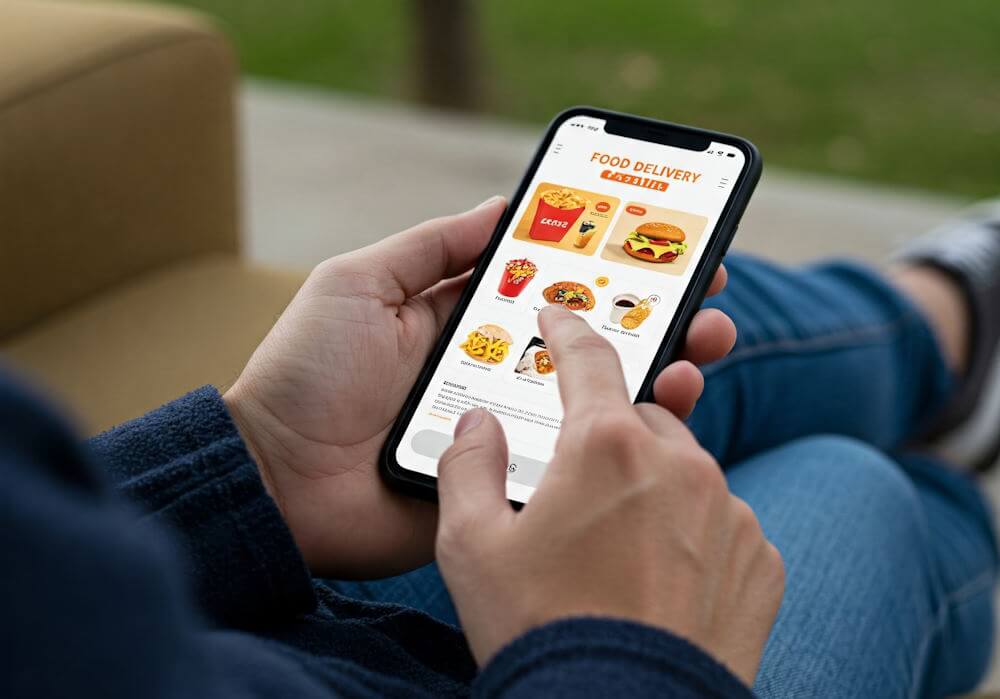In recent years, food delivery services have surged in popularity, transforming the way individuals and families enjoy their meals. This culinary convenience has become an integral part of urban living, allowing consumers to indulge in a diverse range of culinary offerings from the comfort of their homes. However, as the demand for food delivery continues to grow, so does the challenge of long wait times, which can detract from the overall dining experience.
Understanding the best times to order food delivery is essential for maximizing convenience and minimizing delays. Peaks in demand often correspond with busy dining hours, weekends, and special events, leading to longer waits and increased frustration for customers. By being strategic about when to place orders, diners can not only ensure a more efficient delivery experience but also enjoy freshly prepared meals without the inconvenience of extended waiting periods.
The benefits of planning food delivery orders extend beyond mere time saving. Ordering during off-peak hours can often lead to a more satisfying experience, as restaurants are less overwhelmed and able to focus on individual orders. Consequently, food quality and customer service are likely to improve. Moreover, understanding these optimal times can enhance the overall dining experience, allowing patrons to enjoy their meals in a timely manner, whether it’s for a busy weeknight or a special occasion.
As consumers look for ways to optimize their food delivery experience, this article will delve into the various factors influencing wait times and provide insights into when to place orders to enjoy delicious meals with minimal delays. By equipping oneself with this knowledge, one can navigate the ever-growing landscape of food delivery services with ease and efficiency.
Peak Hours: Understanding Demand Patterns
Understanding the peak hours for food delivery services is crucial for making the most efficient use of this convenient option. Food delivery demand typically experiences significant spikes during lunch and dinner times. Lunchtime, which commonly stretches from 11:30 AM to 1:30 PM, sees offices and homes ordering food to satisfy midday cravings. Similarly, the dinner period, usually between 5 PM to 9 PM, marks another peak time when families and individuals seek to unwind with a meal at home after a long day.
Interestingly, weekends and holidays amplify these trends, as more people are free from their weekday responsibilities and prefer the ease of ordering in. On Saturdays and Sundays, lunch and dinner orders tend to rise dramatically as social gatherings prompt increased demand. Statistical models reveal that food delivery services can experience up to a 75% increase in orders during these peak hours compared to standard weekdays.
Moreover, certain holidays, such as Super Bowl Sunday, Thanksgiving, and New Year’s Eve, lead to exceptional spikes in demand. During such instances, it is common for delivery times to extend significantly due to the influx of orders from customers eager to celebrate and avoid the kitchen hustle. Recognizing these peak hours can be beneficial, enabling customers to plan their orders accordingly, either by ordering well ahead of time or opting for off-peak hours, where wait times can be substantially reduced.
In summary, understanding food delivery demand patterns during peak hours helps consumers navigate the busy times effectively. By being aware of these trends, individuals can enhance their food ordering experience and minimize the frustration of long wait times.
Researching Local Trends
Understanding local trends is critical for optimizing food delivery experiences. Various factors can influence the demand for food delivery services, ultimately impacting wait times. One of the primary elements is local events. Concerts, sporting events, or festivals may result in a significant increase in orders from nearby restaurants, leading to longer wait times for deliveries. By being aware of these events, residents can strategically plan their orders to avoid peak times.
Furthermore, seasonal holidays play a crucial role in food delivery patterns. For instance, holidays like Thanksgiving or New Year’s Eve often witness a surge in orders as families opt for takeout instead of cooking. Recognizing these trends allows consumers to anticipate higher demand periods and order earlier, thus minimizing the frustration associated with prolonged delivery times.
Weather conditions are another important consideration. Inclement weather, such as rain or snow, can hinder both drivers and customers, affecting the speed of delivery. During such times, the number of people opting for food delivery tends to increase, resulting in congestion in delivery services. Monitoring weather forecasts can thus provide valuable insight into the best times to order food delivery.
Additionally, local population density and demographics will also shape delivery trends. Certain neighborhoods may experience heightened demand due to their residential composition or proximity to business districts. Utilizing local demographic data can enable residents to gauge peak food delivery times accurately. Overall, researching these local nuances equips consumers with the knowledge necessary to make more informed decisions about when to place food delivery orders. This proactive approach ultimately enhances the dining experience while reducing wait times and maximizing satisfaction.
Best Days to Order for Quicker Delivery
When considering the optimal days to order food delivery, it is essential to analyze the patterns of consumer behavior throughout the week. Typically, weekends, particularly Friday and Saturday, see a significant surge in demand for restaurant services, which consequently leads to longer wait times for customers. Many individuals opt for dining out or ordering in on these days, resulting in a congested processing of orders.
As a contrast, weekdays, especially Monday through Thursday, often present lower demand levels. On these days, many people are more likely to prepare meals at home or are preoccupied with other commitments, which results in fewer orders being placed. Consequently, restaurant staff and delivery personnel generally experience a lighter workload during these times, allowing for efficient processing and quicker delivery of orders.
Among the weekdays, Tuesday and Wednesday stand out as particularly advantageous choices for food delivery. During these mid-week days, restaurants and delivery services tend to have more manageable order volumes. This low demand translates to faster cooking times, increased availability of delivery drivers, and an overall expedited service for customers. Moreover, customers may benefit from various promotions that restaurants often run to encourage business during slower periods.
In summary, when aiming for the quickest possible food delivery, it is advisable to prioritize placing orders on weekdays, with a particular emphasis on Tuesdays and Wednesdays. By strategically choosing these days, customers can enjoy a more timely and efficient dining experience, thereby avoiding the long waits commonly associated with weekend orders.
Timing Your Order: Optimal Windows
When it comes to food delivery, timing can significantly influence your overall experience, particularly regarding wait times. Understanding optimal windows for placing orders is key to minimizing delays and ensuring the food arrives promptly. Typically, delivery services experience peak demand during traditional meal times, specifically lunch from 11 am to 2 pm and dinner from 6 pm to 9 pm. During these periods, restaurants and delivery services are inundated with orders, leading to longer wait times.
To avoid extensive waits, one strategy is to order before these peaks. For lunch, consider placing your order before 11 am or after 1:30 pm, when the rush starts to taper off. Similarly, for dinner, ordering before 6 pm or after 8:30 pm allows you to miss the late-night dining rush, resulting in quicker service and more attention to your meal preparation.
Interestingly, late-night food delivery, which often commences around 10 pm, tends to be less rushed. This time is less crowded as many traditional diners have settled in for the evening, and restaurants are often more prepared to handle a smaller volume of orders. As a result, customers who choose to order later may find themselves enjoying quicker delivery times and a more streamlined service experience.
Moreover, weekdays generally offer shorter wait times compared to weekends when many patrons indulge in ordering food for social gatherings. Keeping this in mind can further assist you in planning your food deliveries to coincides with quieter times. Recognizing these patterns can greatly enhance your food delivery experience, ensuring that your meals arrive in a timely manner whenever you decide to indulge.
Using Delivery Apps and Real-Time Tracking
The advent of food delivery apps has revolutionized the way consumers interact with their favorite dining establishments. One of the key features that enhances user experience is the implementation of real-time tracking capabilities. These apps grant users immediate access to updates on their food orders, including estimated delivery times that are adjusted based on current wait times. Such features can significantly streamline the ordering process and minimize frustrations associated with lengthy delays.
When utilizing delivery applications, it is crucial to consider the time of day and the typical behavior of local restaurants. For instance, during peak dining hours—such as lunch breaks or dinner time—orders are likely to take longer due to high demand. Many delivery apps analyze historical data and current trends to provide users with tailored suggestions regarding optimal ordering times. By taking advantage of this information, individuals can time their orders to coincide with lower demand periods, thereby reducing the likelihood of extended waits.
Furthermore, real-time tracking enables customers to view the status of their deliveries at any point in time. This transparency allows users to stay informed about their order’s progress, from preparation to dispatch and finally to delivery. Understanding where the delivery is in real time can enhance user satisfaction, as it minimizes uncertainty and provides a more accurate expectation of when food will arrive. Additionally, many delivery applications also allow users to communicate directly with their drivers, which can help address any unforeseen issues that may arise during the delivery process.
In adopting these technological advancements, food delivery services not only create a more efficient ordering system for consumers but also foster a better overall experience. Utilizing well-designed apps that feature real-time updates can ultimately result in choosing the best times for delivery, ensuring that culinary delights arrive promptly and effectively.
Tips for Faster Delivery Beyond Timing
When it comes to optimizing your food delivery experience, timing is only one factor. There are several additional strategies that can significantly reduce wait times and improve your overall satisfaction with the service. One of the most effective approaches is to choose restaurants that are geographically closer to your delivery address. By selecting establishments nearby, you minimize the travel distance and time required for the delivery driver to reach your location.
In addition to location, consider the complexity of the menu items you select. Ordering dishes that require less preparation or fewer ingredients can lead to faster cooking times. For instance, opting for simple salads, sandwiches, or pre-packaged meals often results in quicker turnarounds compared to more intricate entrees that may necessitate longer preparation times.
Another important factor to bear in mind is the overall time of day when you choose to place your order. While many individuals gravitate towards peak dining hours, opting to order during non-peak times can enhance your food delivery experience. Restaurants and delivery services tend to experience less volume during these hours, leading to reduced wait times and improved efficiency in handling orders.
Moreover, utilizing online ordering systems can streamline the process even further. Many restaurants feature their own apps or platforms that allow for easy order customization and advance placement, which minimizes confusion and delays. By using such services, you can ensure that your order is accurately captured and processed in a timely fashion.
Finally, consider providing clear delivery instructions to aid the driver in locating your address quickly. Well-defined directions can help avoid potential delays associated with navigating to your location, thus expediting the overall delivery process. By implementing these strategies, you can significantly enhance the speed and efficiency of your food delivery experience.
Review and Community Insights
Drawing insights from a variety of delivery users can provide valuable perspective on optimizing food ordering experiences. Many individuals have shared their personal stories regarding food delivery schedules and the impact that timing has on their wait times. One common sentiment among frequent users is the importance of understanding both peak and off-peak hours. During weekends and major sporting events, wait times tend to drastically increase, as many people turn to food delivery services to cater to their festivities. Therefore, assessing the local community’s situations can reveal trends worth noting.
Some users highlighted their success in ordering food deliveries during mid-afternoons or late at night, when demand often dwindles. For example, families that tend to cook dinner late have reported quicker service when placing orders between 2 PM and 4 PM, conveying a substantial reduction in waiting periods. These testimonies can be particularly useful for individuals looking to avoid the standard dinner rush associated with conventional meal hours.
Additionally, it appears that implementing a strategic approach, such as pre-ordering or scheduling deliveries during less popular dining times, can significantly enhance the experience. A community member recalled their success with pre-ordering meals for lunchtime delivery, thus bypassing the unfortunate scenarios associated with last-minute lunch rushes. Furthermore, when exploring community forums, suggestions about using food delivery apps with real-time tracking capabilities often arise. This feature not only allows customers to monitor their orders but can also help them determine if they should place their order sooner or later based on the current demand. Gathering insights from fellow delivery users clearly emphasizes the value of timing in mitigating long wait times, ultimately leading to an improved food ordering experience.
Conclusion and Final Thoughts
Ordering food delivery can be a convenient solution for a variety of occasions, yet timing plays a critical role in determining the quality and efficiency of the experience. Throughout this blog post, we have explored the various factors that influence food delivery wait times, including peak hours, popular food choices, and local trends. Understanding these elements can significantly enhance your overall food delivery experience.
By being aware of peak ordering times, typically during lunch hours and evenings, you can choose to place your order either before or after these busy periods. This simple adjustment can lead to shorter wait times and fresher food. Additionally, considering local events or holidays can further inform your ordering decisions, as such occurrences often cause fluctuations in demand. Engaging with food delivery platforms to monitor real-time trends and utilizing features like pre-ordering can also prove beneficial.
Furthermore, when selecting your meal, keeping in mind the types of cuisine that are more susceptible to delays can influence your choice. For example, certain dishes require longer preparation times, which could extend your wait. Opting for meals that are known for quicker delivery can enhance your satisfaction and efficiency.
In conclusion, being strategic about the timing of your food delivery orders can profoundly affect your experience. By applying the insights shared, you can minimize wait times and ensure that your meals arrive promptly and in optimal condition. So next time you’re craving a meal delivered to your doorstep, take a moment to consider the best time to place your order, putting you in a prime position to enjoy a seamless dining experience at home.





